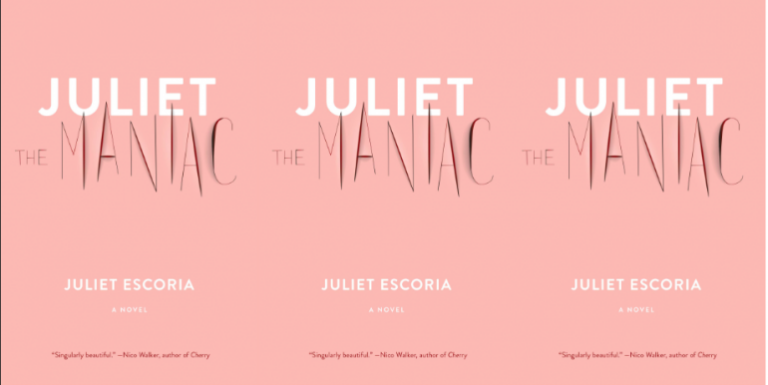A Ghost Among Ghost Stories
A girl dies by suicide after an embarrassing video of her goes viral, but her vengeful spirit returns via the very digital networks that enabled her shame. So goes Leo Gabriadze’s 2014 horror movie Unfriended, which unfolds almost entirely within the frame of a laptop’s screen. Strange messages, inexplicable glitches, private data made public by a phantom hand. “Online, your memories last forever,” reads the tagline, “but so do your mistakes.” Beneath its surface as a contemporary cautionary tale, Unfriended is merely a new rendition of an old story: the ghost story, where the dead attempt to contact the living, seeking resolution to some unaddressed trauma. Once, spirits slammed doors or snuffed out candles in gothic castles; now, in the digital age, they arrive through computers and TV sets, reaching us via whatever mode of communication is at hand.
Claire Cronin’s Blue Light of the Screen: On Horror, Ghosts, and God, out this month, is, at least in part, a book about such stories. The work began as a short essay on the horror movie, an “investigation of a lifelong obsession” through genre theory. But in starting, Cronin found herself unable to stop. The essay became a book, the book a dissertation. Her PhD in poetry was soon subsumed into the project—poems ritually mutilated, lines lifted from their original context and offered to the new text. Her illustrations, anxious renderings of horror stills, featured characters that came to share a resemblance to Cronin herself. She began to invade the work in other ways too, personal anecdotes and family tales appearing alongside academic critical theory and film study until the distinction fell away. Horror themes infiltrated Cronin’s other work, as well, such as her decidedly ghostly folk record Big Dread Moon. She became both haunted by the subject matter and a haunting force within it. “I could not escape the spell,” Cronin writes, “and did not want to.”
For Cronin, adolescence came with depressive episodes that would persevere into adulthood. Visions of violence, dreams of death. “It is a kind of heartsickness or soul-sickness,” she writes. “A mourning for some critical, unthinkable lost part.” In blending memoir and genre study, Cronin searches for a link between this sadness and her love of horror. Like a distressed mirror in which her own suffering moves, the films provide distance, and with it, recognition. Not explaining the darkness, but proving its existence. A good horror movie “return[s] me to a story that my mind’s already been telling,” Cronin writes. “I am pulled back down familiar tracks.”
But what does it mean that something so innately intimate and difficult is available at the touch of a button? The question hangs over Blue Light of the Screen, holding Cronin to her fascination with horror and continuing the obsessive spell of the project. Like the spirit of Unfriended in its purgatorial state, she requires resolution. A ghost assailed by nameless trauma and trapped in limbo between faith and skepticism, cause and effect. “I write this in great fear, as if I’m dead and trapped inside a purgatory full of books and screens,” she writes. “I write this with a great need to discover and unveil, as if the future of my afterlife depends on it.”
The mystery leads to childhood. Like much of the millennial generation, Cronin’s was one bathed in the television’s blue light, something only exacerbated by her father’s job as a cable network executive. Within this environment, exposure to the horror genre was as inevitable as it was alluring. Cronin describes using shows like Unsolved Mysteries as a kind of inoculation against terror, fast-forwarding and rewinding, the agency of the remote control allowing the dosage of fright to be finely regulated. Could such endeavors come with unforeseen side effects? Could the consumed images build up in one’s mind and shape a traumatized, pessimistic outlook? “What if your mind worked like a television set?” Cronin quotes Unsolved Mysteries, teasing its own risks. “And what if you could never turn the set off?”
As the second pillar of Cronin’s childhood, religion is held as another suspect, and unlikely similarities are drawn between Christian dogmatism and the perilously immersive electronic present. The other women in her family might not hold an interest in horror, but “their passionate devotion to stories about hell, purgatory, and the apocalypse belies an interest in another kind of fright.” Her mother’s side is especially superstitious, practicing a heterodox Catholicism bound up in narratives of spirits and demons. If scary television could imprint dark visions on a young mind, then surely such a stark, macabre religion could too. When Cronin’s mother cautioned her children against the horror genre, believing negativity to attract dark forces, her warning was strikingly like those of the movies themselves. An old evolutionary reflex: meddle in the dark at your own peril. Perhaps, then, entertainment and faith are nothing more than opposing sides of the same coin. Existential terrors artfully wrapped, every ghost and demon just a metaphor for the deepest human fears.
Cronin finds this reading unsatisfactory, superficial, somehow feeding the anxieties it claims to explain. The rational scholar’s gaze is cool and impersonal, and coldness offers no salve against the dread of depression. Dante’s innermost circle of hell was an icy lake, after all. To paint supernatural belief as pure metaphor is to confront a larger void, one more terrifying and grief-stricken than any vision of the underworld. Take Ari Aster’s 2018 movie, Hereditary, an example of the so-called “prestige horror” genre said to swap cheap thrills for deeper engagement with psychological and philosophical themes. A family is plagued by strange occurrences after the death of their grandmother, and eventually they are drawn into an occult ritual in service of a demon. But the film is really about grief, mental illness, and family dysfunction, the rational viewer might argue. Evil is only a metaphor. In evading the supernatural, however, a different portal is opened, another monster conjured. There is no meaning, just a recurring cycle of delusion and empty violence. A depressive present presented as the entire world.
Cronin, therefore, meets an impasse. Explanations only deepen the dread and compel the search for mystery. There is no clear root or narrative underpinning her suffering, the only understanding her lack of understanding. But Cronin’s cross-disciplinary style allows a nuanced exploration of such ambiguous terrain, pushing beyond the precision of academic writing with an artist’s trust in intuition, allowing her to be both skeptic and believer. “A traditional scholar does not believe in ghosts,” she quotes of Jacques Derrida, but Blue Light of the Screen is determined to be this impossibility. The position is itself traumatic, near inexpressible, and the hybrid style sees Cronin turn to all available tools where no single one can suffice. Just as a ghost might slam doors, rattle pans, and lift children from their beds in order to make itself known, Cronin utilizes language in every form in the hope of discovering a magic arrangement that might convey her feelings. And when words fail, there are images, music. The work could therefore be said to represent a form of bricolage, what Michel de Certeau describes as a “poetic making do.” The bricoleur is “someone who uses the ‘means at hand,’” Derrida writes in “Structure, Sign, and Play,” “the instruments he finds at his disposition around him . . . not hesitating to change them whenever it appears necessary, or to try several of them at once, even if their form and origin are heterogeneous.”
The breadth of Cronin’s study follows a similar logic. A heterogeneous and sometimes conflicting set of sources encompassing film, fiction, poetry, Catholicism, occultism, critical theory, philosophy, and psychoanalysis. Cronin prays for the dead in purgatory like a good Catholic, experiments with magic, and quotes skeptical or outright atheist scholars (like Mark Fisher, Jean Baudrillard, or “occultism is the metaphysic of dunces” Theodor Adorno). Just as when examining the origins of her trauma, Cronin gives no system or discipline ultimate authority, favoring the balance of micronarratives over a single, totalizing solution.
It is in this resistance of grand narratives that the book finds its purpose. If Cronin is a purgatorial figure, then our world is a purgatory. The eternal present is the capitalist narrative, haunted by the threat of damnation and hope of absent futures. When the tagline of Unfriended says that everything lasts forever online, the implication is that the now never ceases. We are confronted by immortality as imagined in Silicon Valley, rooted in an individualist disregard for the past and the future. The now without end is the curse of the depressive. But ghosts disrupt this techno-capitalist illusion, their appearance puncturing the perpetual present by connecting us to what has been before, and what awaits us all. To immerse oneself in a world of horror is to connect one’s suffering to some greater system of pain, to position one’s own existential dread as part of an entire history of such terror. The process cannot eliminate depression, might even consolidate its enduring presence, but does help to shift its context, the personal curse of sorrow repositioned as a universal, spiritual affliction. Films then are indirect visitations, masked communication from those who do not wish to be forgotten, or want us to forget. “I have been told there are no actions a poor soul can take except to suffer and to pray,” Cronin writes, and in this way Blue Light of the Screen comes to form a prayer. A prayer for the dead. For herself. For justice and peace. If not in this life, then in some space beyond.
This piece was originally published on October 29, 2020.


